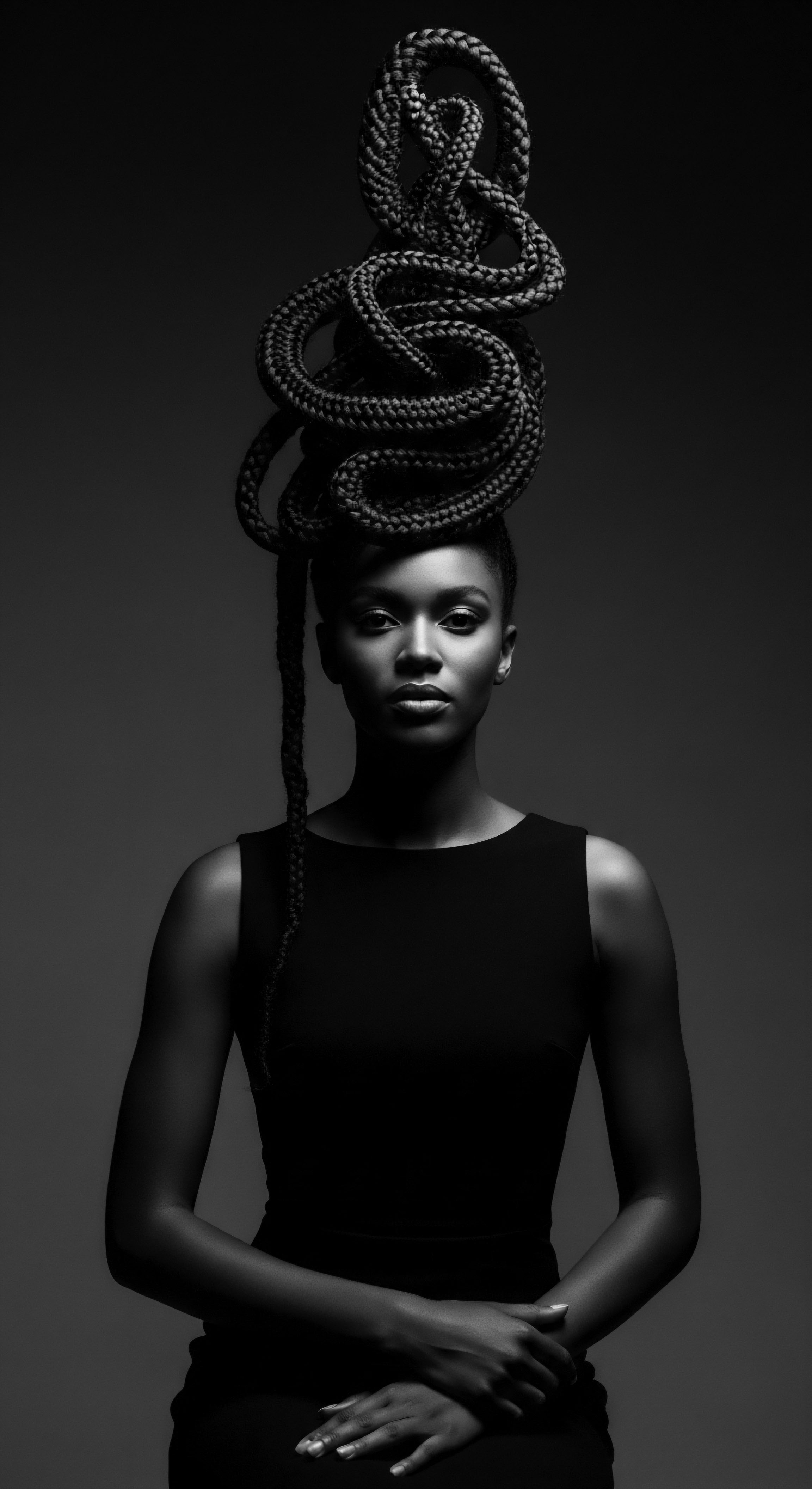
Roots
To journey back to the heart of ancient Egyptian hair care is to listen for the echoes of ancestral wisdom, to feel the gentle pull of threads connecting past to present. For those of us with textured hair, this isn’t merely an archaeological exercise; it’s a homecoming, a recognition of ingenuity that shaped beauty traditions long before modernity’s dawn. Our strands carry stories, genetic memory, and perhaps, the very mineral legacy of those sun-drenched lands. The care practices of Kemet were not superficial adornments; they were profound expressions of identity, hygiene, and spiritual connection.
Each braid, every application of oil, each carefully crafted wig spoke volumes about an individual’s place in the world, their reverence for self, and their readiness for the afterlife. This ancient civilization, with its deep respect for the natural world, cultivated a legacy of hair rituals that continue to inspire our contemporary understanding of hair wellness.
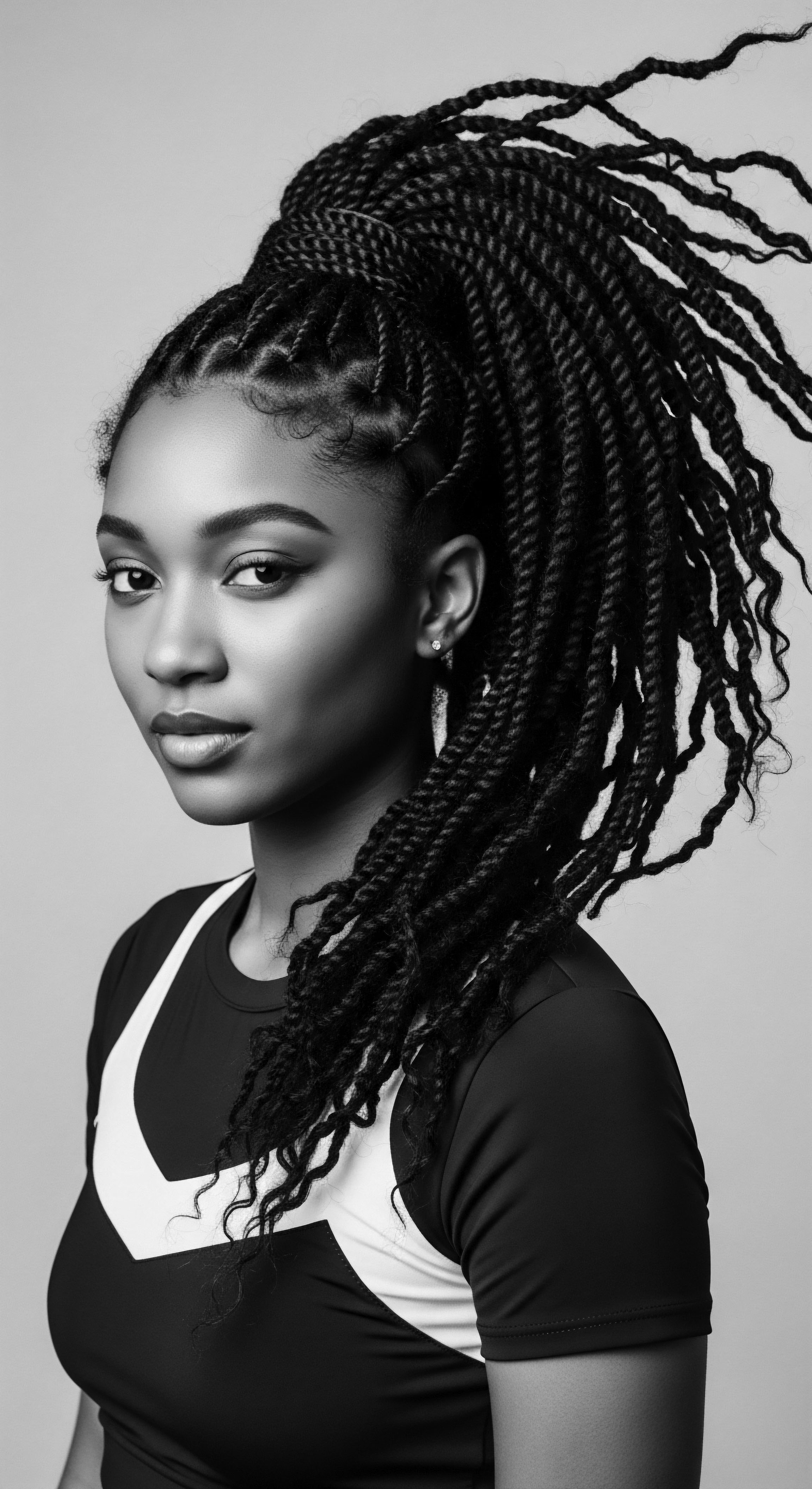
The Sacred Strand, From Follicle to Finish
Understanding how ancient Egyptians cared for their hair begins with an appreciation for its fundamental biology. Human hair, regardless of its curl pattern or coil, is a protein filament, primarily composed of keratin. The unique helical structure of textured hair – its twists, turns, and varying diameters along the shaft – dictates its characteristics ❉ its propensity for dryness, its elasticity, and its remarkable ability to hold intricate styles. In ancient Egypt, the very structure of the hair, whether naturally straight, wavy, or tightly coiled, influenced care practices.
The desert climate, relentlessly dry and intensely sunny, meant that hair, particularly textured hair, required significant moisture and protection. The ancients intuitively understood this biological need.
Archaeological studies of mummified remains have revealed a spectrum of hair types among the ancient Egyptians, from straight to curly, often remarkably preserved. This dispels any singular, narrow view of ancient Egyptian hair, instead showcasing a rich diversity. For instance, research by Natalie McCreesh and her team at the University of Manchester, published in the Journal of Archaeological Science, examined hair samples from 18 mummies, finding that nine had hair coated in a fat-like substance.
This substance, identified as biological long-chain fatty acids, served as an early form of “hair gel” to hold styles in place, suggesting a deep understanding of hair manipulation and preservation, both in life and for eternity (McCreesh, 2011). This scientific insight provides a tangible link to the practical application of care, hinting at the needs of diverse hair textures to maintain form in the desert’s embrace.
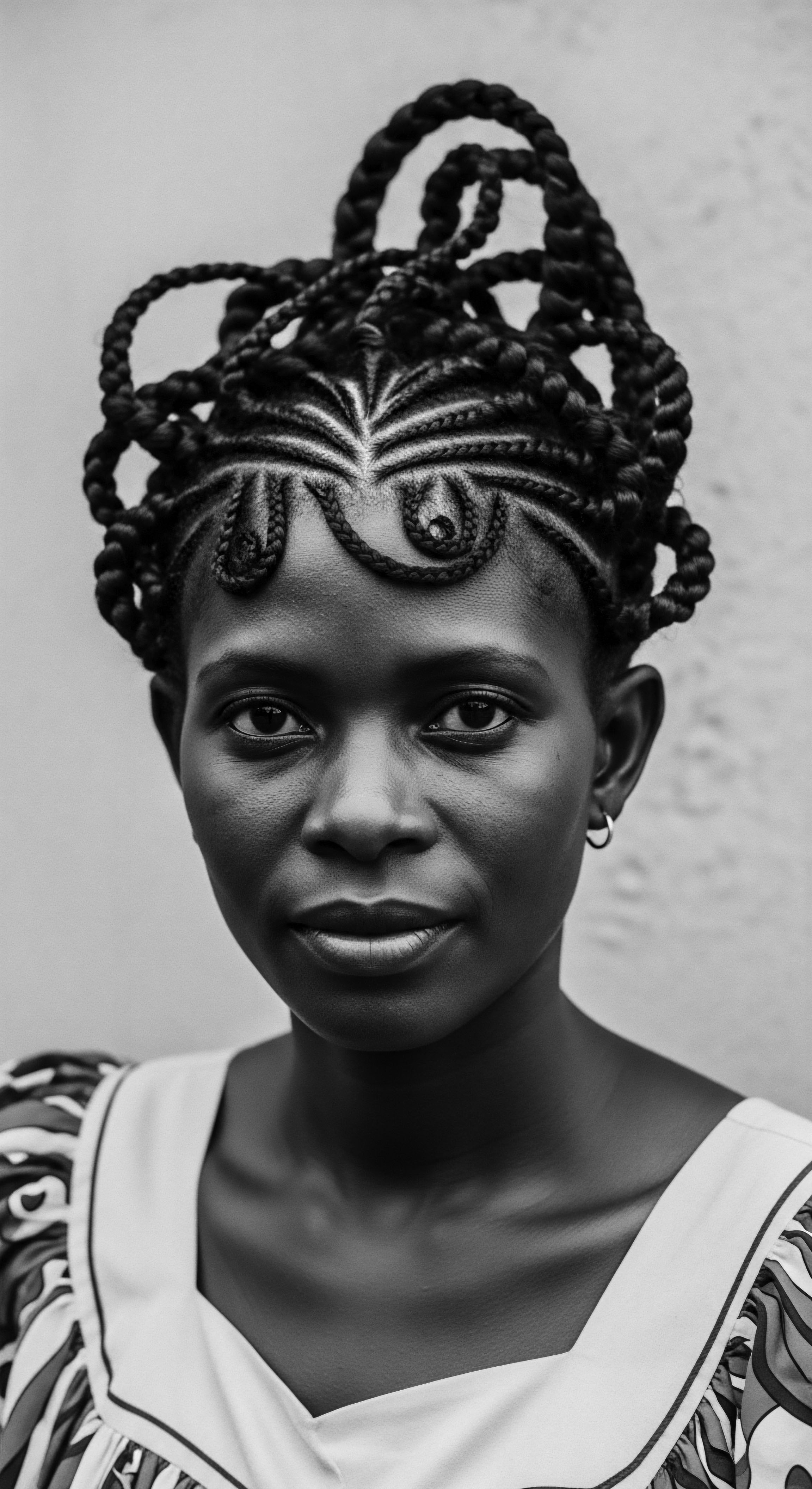
Ancestral Knowledge of Hair’s Nature
The ancient Egyptians’ understanding of hair anatomy might not have mirrored modern molecular biology, yet their practices demonstrate an empirical knowledge of what made hair strong, supple, and aesthetically pleasing. Their classifications, though unwritten in scientific papers, were observed in daily life ❉ a “side lock of youth” for children, specific styles for priests, and elaborate wigs for the elite, each signifying status and stage of life. This societal coding of hair underscores its vital communicative role.
The growth cycle of hair, a continuous process of shedding and renewal, would have been apparent through daily observations. Hair loss and graying were concerns then, as now, prompting remedies documented in papyri, which often included animal fats and herbal compounds. This ancestral approach to hair health was holistic, intertwining appearance with perceived vitality and spiritual well-being.
Ancient Egyptian hair care was a deep expression of identity, hygiene, and spiritual connection, echoing ancestral wisdom in every strand.
The lexicon of textured hair, for us today, includes terms like “coils,” “kinks,” and “waves.” While ancient Egyptians did not use these specific terms, their artistic renderings and preserved hair remnants indicate a visual recognition and manipulation of diverse curl patterns. The elaborate braided styles, often enhanced with extensions, speak to a profound skill in handling hair that could be plaited and sculpted into impressive forms. These techniques, passed down through generations, form a cornerstone of the heritage of hair care.
- Kalahari Oil ❉ Sourced from the Kalahari melon, this oil offers essential fatty acids, historically prized for skin and hair conditioning in dry climates, reflecting a profound connection to indigenous African botanicals.
- Oleaster Oil ❉ From the wild olive, this oil likely provided moisturizing and protective benefits, aligning with ancient Mediterranean and North African traditional oil usage for hair health.
- Baobab Oil ❉ Extracted from the “tree of life,” baobab oil, rich in vitamins and fatty acids, supports hair elasticity and strength, linking ancient Egyptian practices to a wider ancestral African reverence for nature’s gifts.
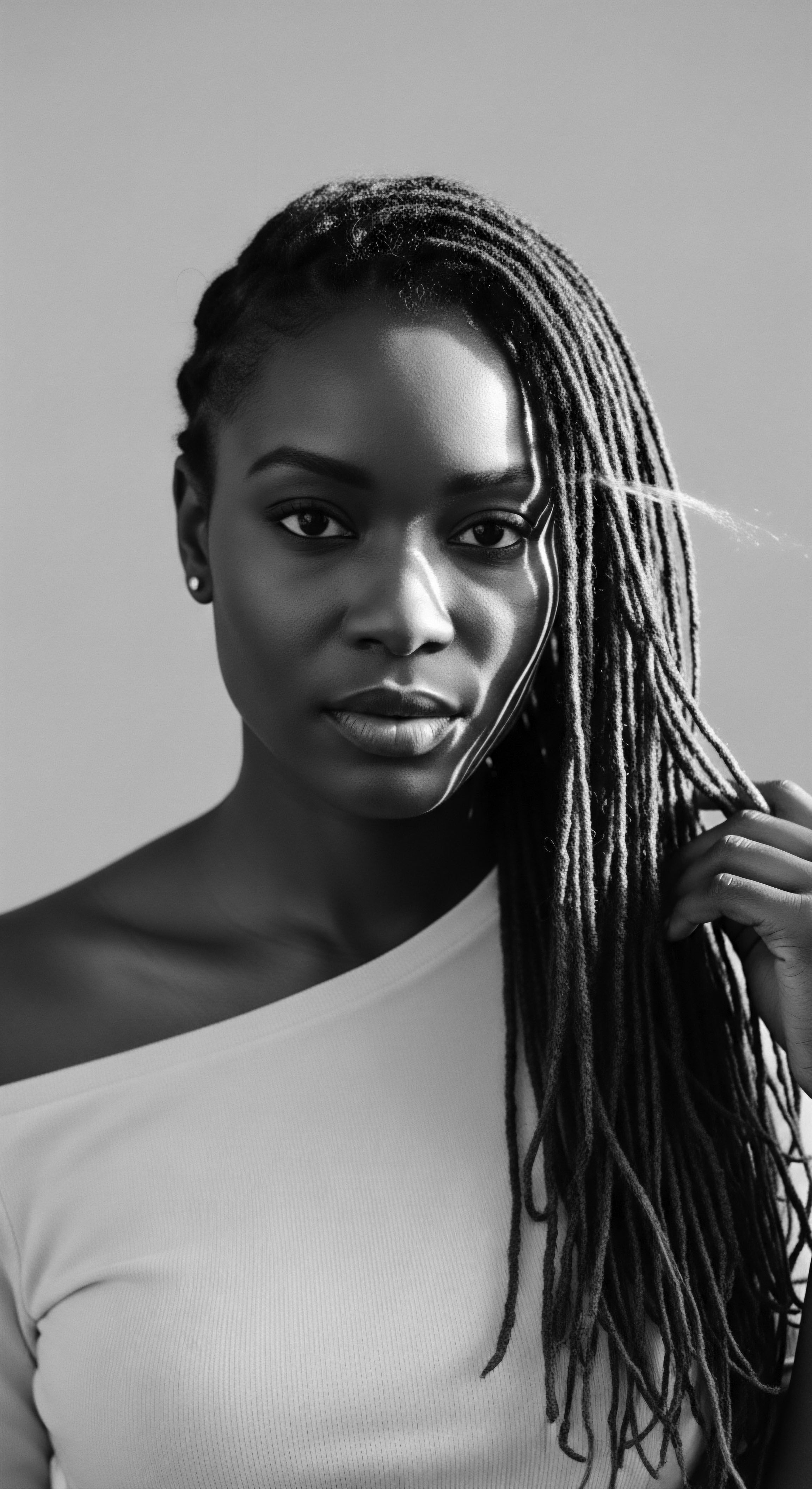
Ritual
The daily and ceremonial practices of ancient Egyptians reveal a world where hair care ascended beyond mere grooming; it was a ritual, a tender thread connecting the individual to their community, their lineage, and the divine. The meticulousness observed in their hair regimens reflects a culture that valued personal presentation, hygiene, and a certain spiritual preparedness. These traditions, particularly the use of wigs and extensions, offer compelling insights into the heritage of textured hair styling.
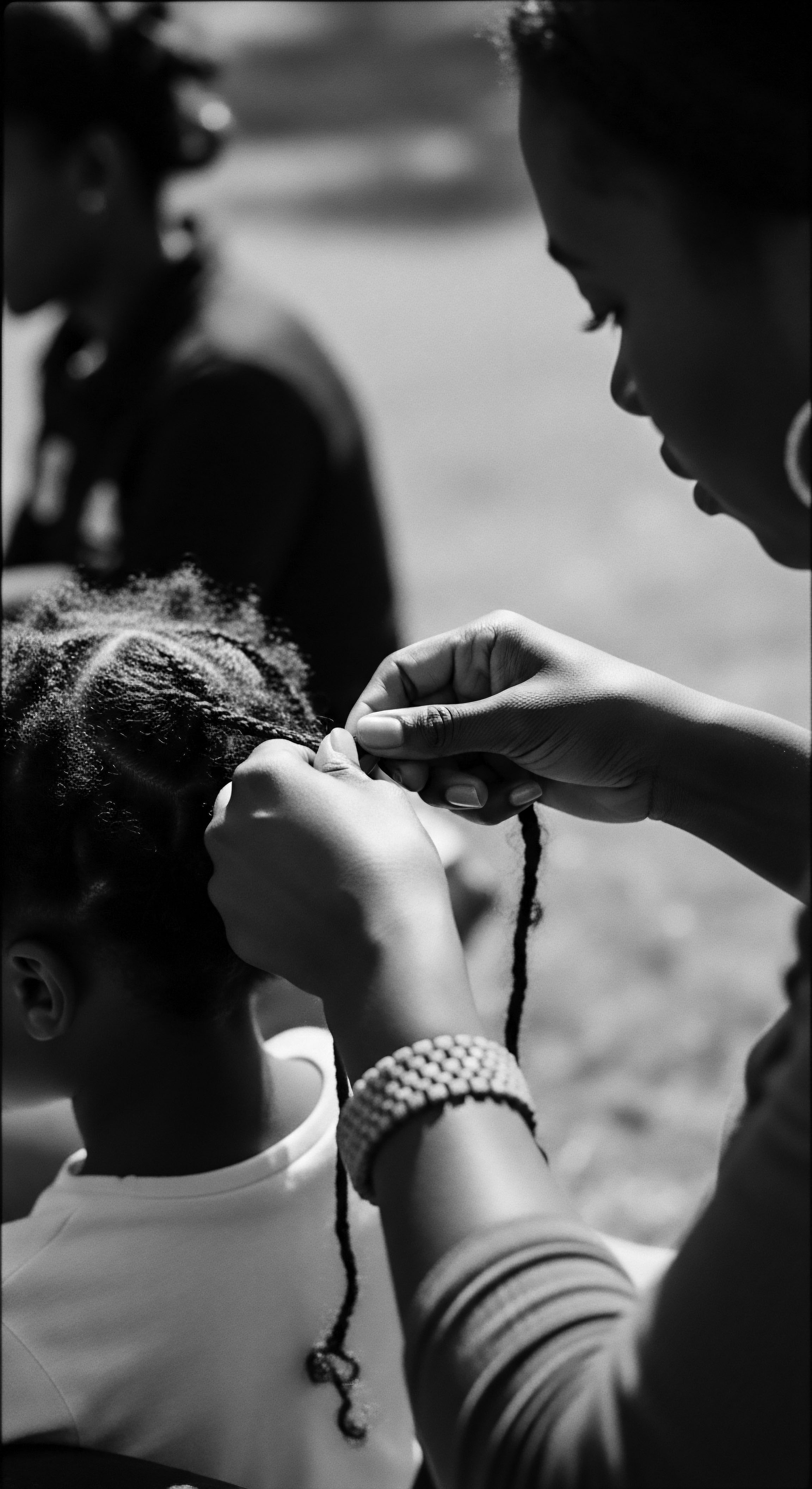
Was Wig Wearing an Expression of Natural Hair Heritage?
One of the most striking aspects of ancient Egyptian hair culture was the widespread adoption of wigs and hair extensions. This practice, dating as early as 3400 BCE, spanned all social classes and genders, though the complexity and materials varied greatly. For the elite, wigs were symbols of status and wealth, often crafted from human hair, animal hair, or plant fibers, intricately braided and set with beeswax and resins. Beneath these elaborate wigs, many Egyptians, particularly priests, kept their natural hair cropped short or shaved to maintain cleanliness and prevent lice infestations in the scorching heat.
While wigs provided practical benefits, they also allowed for highly stylized and voluminous looks that might have been challenging to achieve with natural hair alone, especially for those with less dense or finer textures. However, the presence of hair extensions braided directly into natural hair demonstrates a deep appreciation for enhancing one’s own growth. This practice of adding fullness and length echoes ancestral hair traditions found across Africa, where braiding and adding fibers to natural hair have been long-standing methods of protective styling and adornment. The ancient Egyptians, in their adoption of wigs and extensions, were perhaps extending the visual language of their natural hair heritage, celebrating a desired aesthetic of abundance and form.
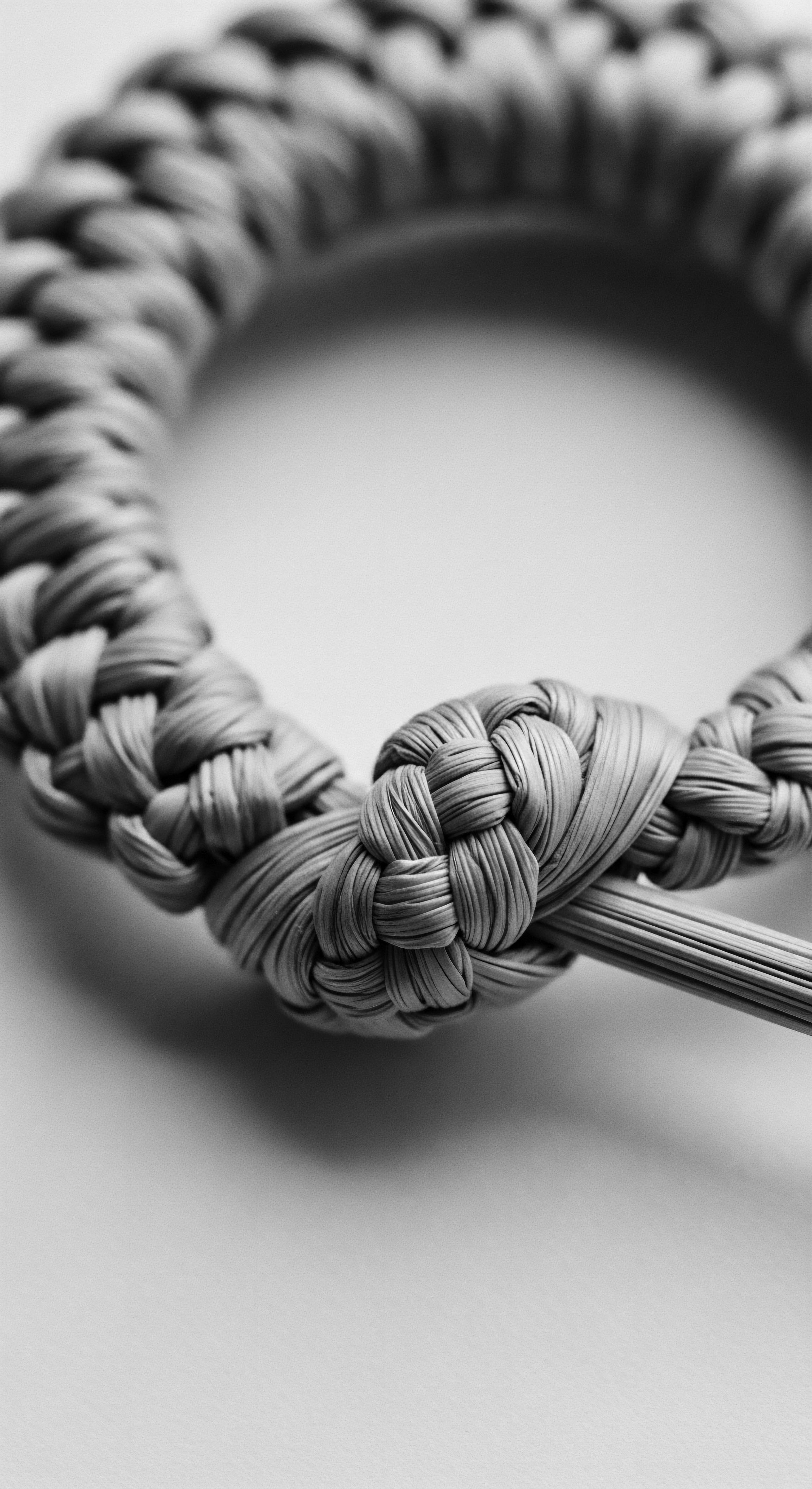
Tools and Transformations
The toolkits of ancient Egyptian hairdressers, as unearthed by archaeologists, speak volumes about their skill. Combs, often exquisitely carved from ivory, wood, or bone, were not simply utilitarian objects but also significant cultural artifacts, sometimes featuring animal motifs or being placed in tombs as burial offerings. These combs, with varying tooth widths, would have been essential for detangling and styling both natural hair and wig components.
Evidence also points to the use of metal implements, resembling curling tongs, to create tight ringlets, a popular style for both men and women. This suggests a sophisticated understanding of manipulating hair into desired textures, possibly even heat-setting curls.
The creation of wigs itself was a highly skilled craft. Hairdressers would braid human hair into dozens of small plaits, then attach them to a mesh foundation. This labor-intensive process underscores the value placed on hair and its presentation.
For instance, a magnificent wig from the New Kingdom, housed in the British Museum, consists of 300 strands, each containing 400 individual hairs, all coated with resin and beeswax. This level of artistry points to a society that viewed hair as a canvas for cultural expression, a tradition deeply woven into the fabric of African hair heritage where intricate braiding patterns and styling are communal and artistic endeavors.
Ancient Egyptian hair rituals served as a social and spiritual medium, with wigs and extensions symbolizing status while extending an aesthetic deeply rooted in ancestral hair practices.
The protective qualities of many ancient styles also connect to modern textured hair practices. Keeping natural hair shorter or shaved under wigs reduced sun exposure and breakage. The use of oils and fats, as detected in mummified hair, provided conditioning and held styles, much like modern pomades or gels for textured hair.
| Ancient Egyptian Tool Ivory and Bone Combs |
| Purpose and Heritage Connection Detangling, parting, and decorating hair; often ceremonial, signifying status and personal grooming. Connection to ancestral craft and communal hair care. |
| Modern Parallel Wide-tooth combs, decorative hairpins, parting combs. |
| Ancient Egyptian Tool Metal Tongs/Curling Implements |
| Purpose and Heritage Connection Creating curls and waves; suggesting early methods of heat styling or setting styles. Evokes the long history of hair manipulation across diverse cultures. |
| Modern Parallel Curling irons, flexi-rods, heatless curl sets. |
| Ancient Egyptian Tool Wig Foundations |
| Purpose and Heritage Connection Bases for constructing wigs from human hair or plant fibers, allowing for elaborate, protective styles. Represents an ancient form of hair augmentation and protective wear. |
| Modern Parallel Wig caps, lace fronts, crochet braids. |
| Ancient Egyptian Tool These ancient tools and practices reflect timeless approaches to hair care, underscoring the enduring legacy of hair manipulation and adornment from Kemet. |
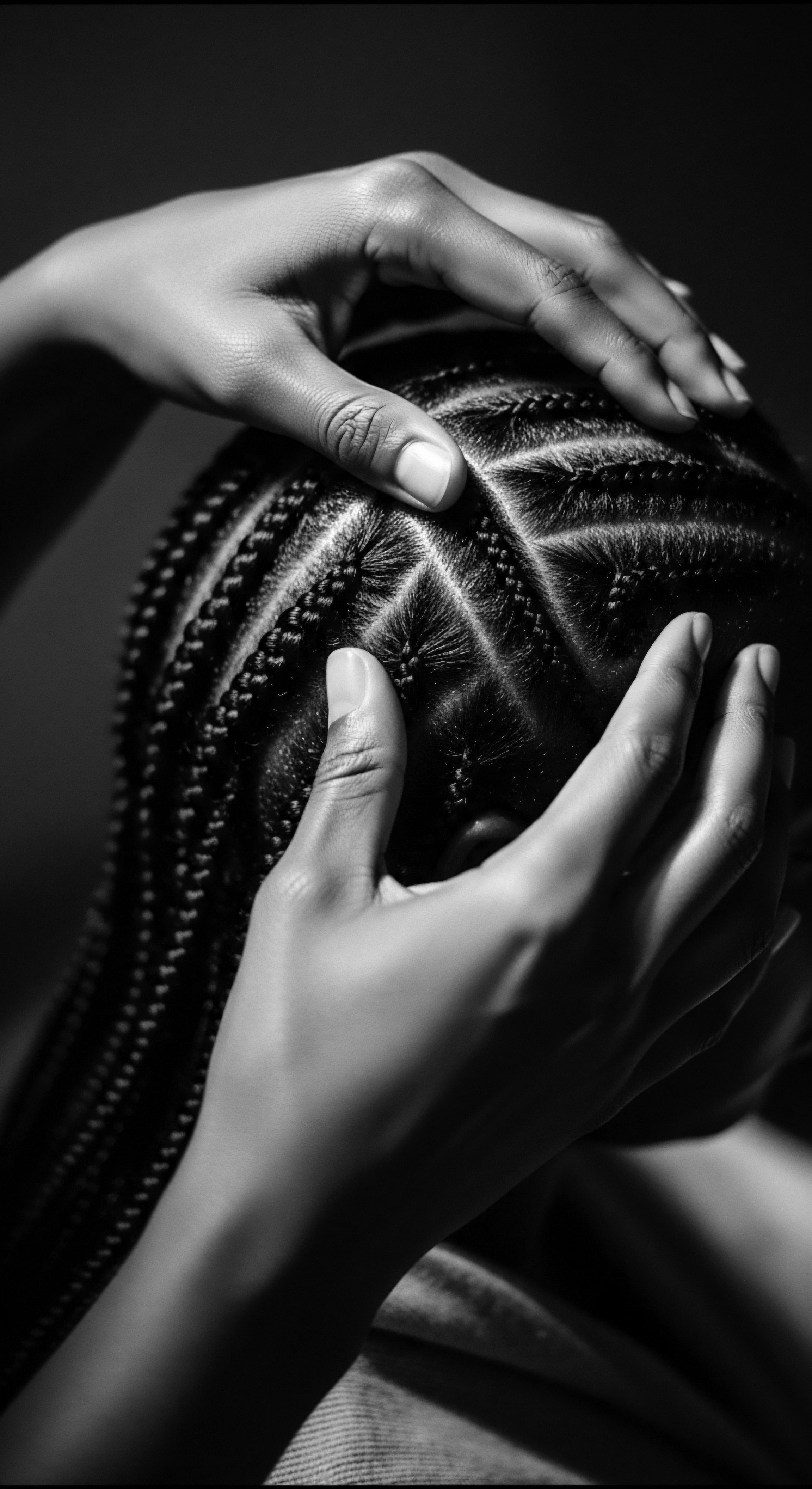
How Did Protective Styling Safeguard Ancestral Strands?
Protective styling, a cornerstone of textured hair care today, found its genesis in ancient Egyptian ingenuity. Beyond the wigs and extensions, natural hair itself was styled in ways that minimized environmental damage. Braids, as seen in various depictions and on mummified remains, were not simply decorative. They served to keep hair neatly contained, reducing tangling, breakage, and exposure to the harsh desert sun and wind.
This foresight in protecting the hair shaft echoes the rationale behind many contemporary protective styles like cornrows, box braids, or twists, all designed to safeguard the hair from external stressors and promote length retention. The cultural significance of these braided styles extended to identity, indicating age, marital status, and social standing. The visual language of braids, therefore, was both practical and deeply symbolic, a living archive of community and individual narrative.
The incorporation of oils and fats, often infused with aromatics, further speaks to a comprehensive care regimen. These substances would have sealed moisture into the hair, provided a protective barrier against environmental elements, and added luster. The very concept of “setting” a style with a fatty “gel” is a direct predecessor to modern styling creams and pomades, showing an enduring understanding of product function for textured hair. This historical continuity provides a profound affirmation for those who seek to honor their hair heritage through natural and protective methods.

Relay
The journey of hair care in ancient Egypt, a complex tapestry woven with threads of status, spirituality, and survival, offers profound lessons for the contemporary dialogue around textured hair heritage. This deep dive moves beyond the surface, seeking the scientific underpinnings and cultural reverberations of their practices, thereby connecting the wisdom of the Nile Valley to our present understanding of hair wellness. The meticulous attention paid to hair in Kemet was not accidental; it was a deeply considered regimen.
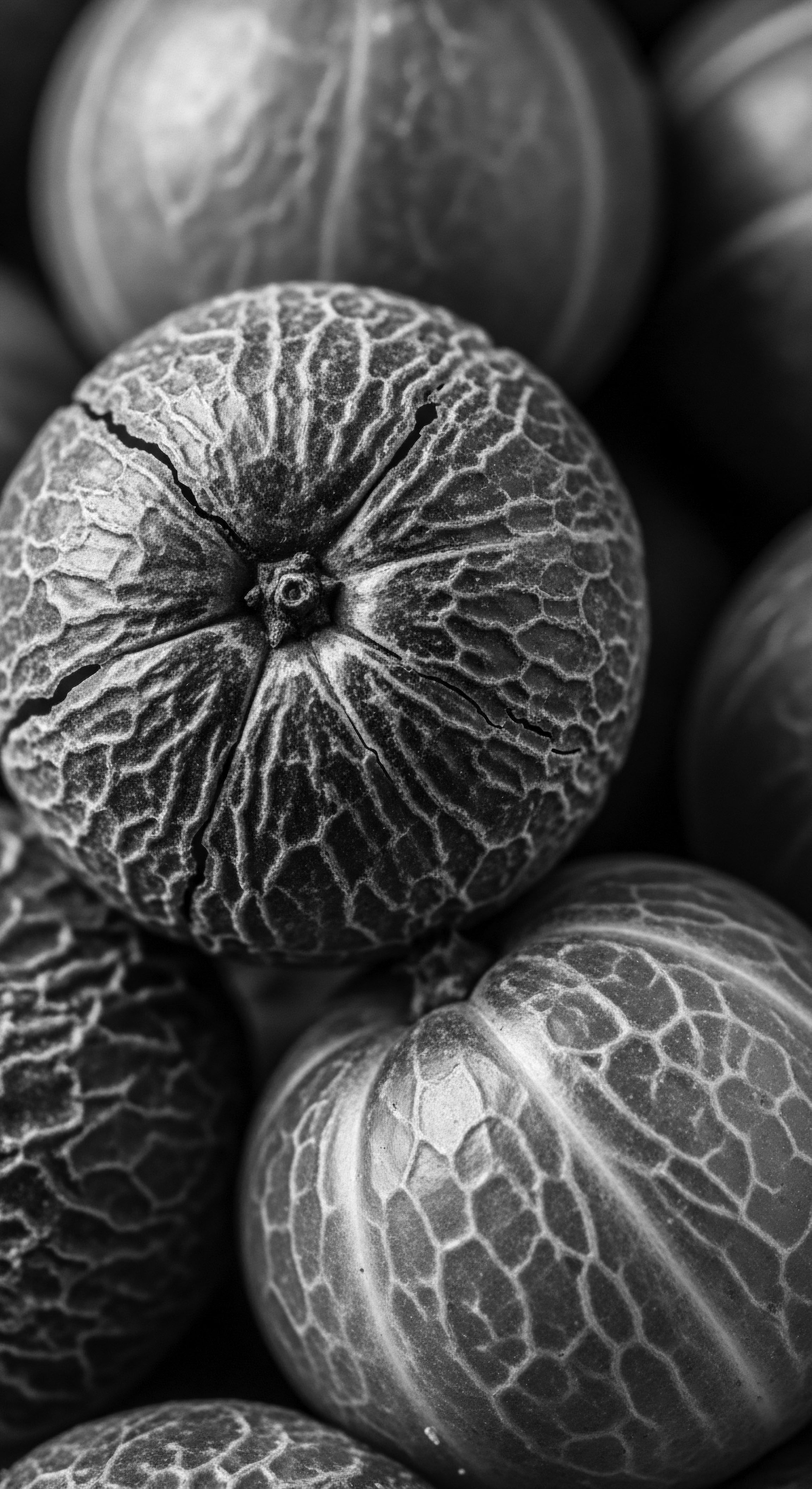
What Scientific Insights Do Ancient Hair Remedies Offer?
The ancient Egyptians’ understanding of hair, while pre-dating modern chemistry, was rooted in keen observation and practical application. Their reliance on natural oils—such as castor, almond, and possibly pomegranate—points to an empirical knowledge of their moisturizing, conditioning, and protective properties. These oils, rich in fatty acids, would have mimicked the sebum naturally produced by the scalp, which for textured hair, often struggles to travel down the coiled shaft, leading to dryness.
The use of beeswax and resins to set styles, as identified in mummified hair, acted as occlusive agents, sealing in moisture and providing hold. This ancient “hair gel” system directly correlates with modern hair pomades and creams formulated to define curls and reduce frizz.
Beyond simple conditioning, the Egyptians incorporated ingredients with recognized therapeutic properties. Henna, derived from the Lawsonia plant, was widely used as a natural dye, imparting a reddish tint, but it also served as a conditioning agent and a scalp soother. Its ability to strengthen the hair shaft and balance scalp pH finds validation in modern trichology. The Ebers Papyrus, a medical text dating to around 1550 BCE, records remedies for hair loss, including mixtures of various animal fats.
While the efficacy of certain ingredients (like lion or crocodile fat) is questionable by modern standards, the fundamental recognition of hair loss as a concern and the systematic approach to addressing it speak to an early form of dermatological inquiry. This historical context highlights how ancestral practices, even those not fully understood through a modern scientific lens, often contained kernels of effective botanical wisdom.
The consistent application of these fatty, often scented, substances not only maintained aesthetic standards but also contributed to scalp health by reducing dryness and potential flaking, a common concern for textured hair. The meticulousness of their preparations, often involving grinding, blending, and infusing, showcases a chemistry born of necessity and tradition. The study by McCreesh (2011) which analyzed mummified hair and found specific long-chain fatty acids, provides direct scientific evidence of these ancient formulations’ enduring presence and function.
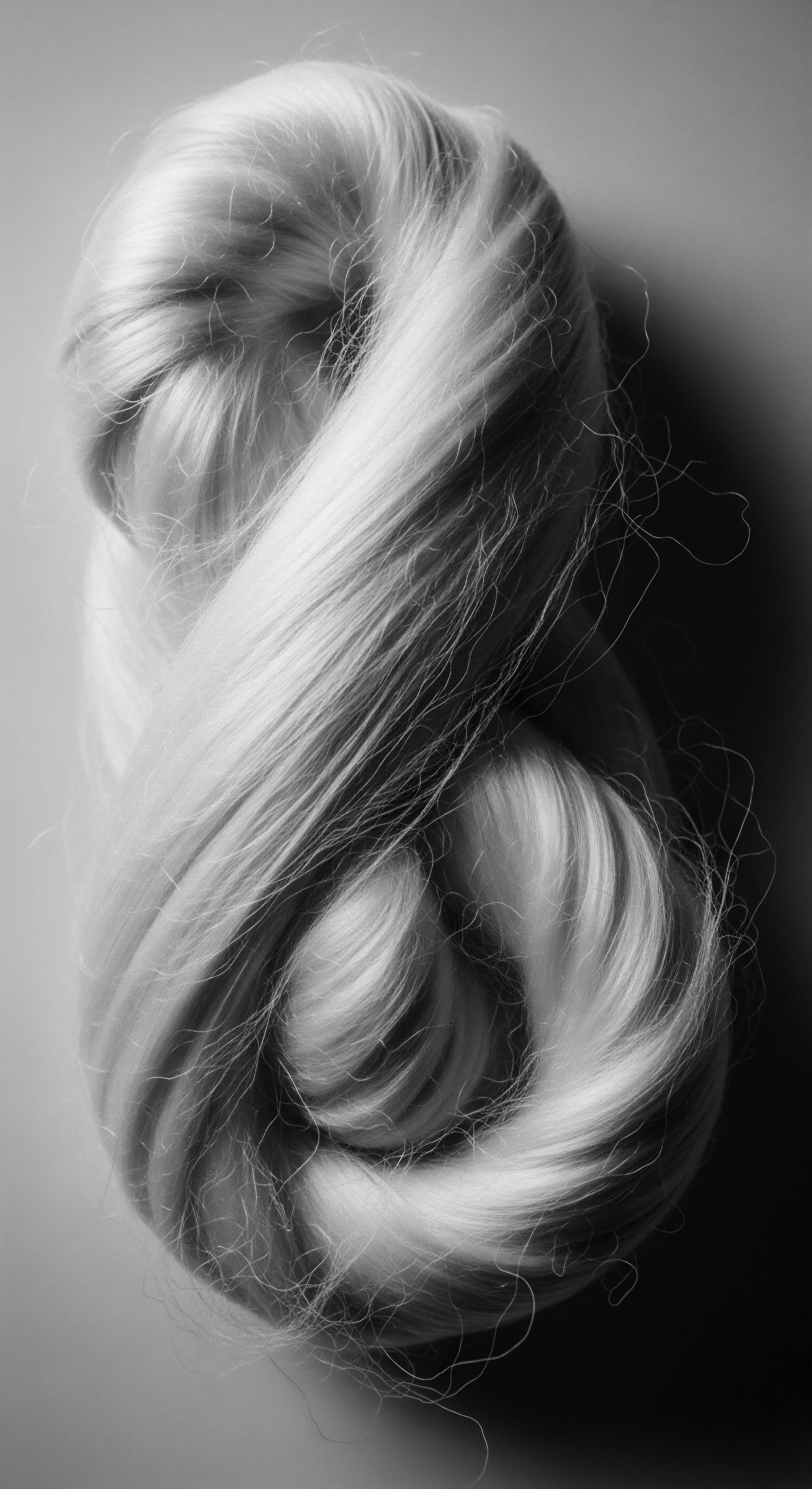
How Does Ancient Egyptian Nighttime Hair Care Inform Contemporary Rituals?
The concept of protecting hair during sleep, so vital for maintaining textured hair health today, echoes in the practices of ancient Egypt. While direct textual evidence of specific nighttime hair rituals is sparse, the pervasive use of wigs and head coverings, combined with the general emphasis on hygiene and preservation, suggests a pragmatic approach to protecting hair during rest. Wigs, being precious commodities, would have been stored carefully, perhaps on stands, preserving their intricate styles.
For those wearing their natural hair, a simple wrapping or covering would have provided protection from dust, insects, and tangling during sleep. This prefigures the modern use of silk or satin bonnets, scarves, and pillowcases, which minimize friction, prevent moisture loss, and protect curl patterns overnight.
The arid desert climate, with its dry air, would have necessitated strategies to retain moisture. The application of oils and fats, as mentioned, would have been a daily or frequent ritual. Applying these emollients before bed would have allowed for deeper penetration and conditioning, guarding against the moisture evaporation that naturally occurs overnight.
This aligns with contemporary nighttime sealing and moisturizing practices for textured hair, underscoring a timeless understanding of hair’s needs in challenging environments. The continuity of this basic principle across millennia speaks to a shared human experience of nurturing our strands.
The systematic use of natural oils and protective styles in ancient Egypt mirrors modern textured hair care, validating ancestral wisdom through scientific observation.
The focus on hygiene was paramount. Priests, for instance, shaved their heads for ritual purity, avoiding lice and ensuring cleanliness. For the broader populace, the very act of creaming and oiling the hair, often followed by combing, served as a cleansing and preventative measure against parasites that thrive in less maintained environments. This combination of aesthetic and practical concerns shaped their comprehensive hair care regimens, providing a historical foundation for today’s holistic hair wellness philosophy.
- Palm Oil ❉ A common base oil in the ancient world, it would have offered significant moisturizing and conditioning properties, reflecting agricultural practices of the region.
- Castor Oil ❉ Known for its thick consistency and purported hair growth benefits, it was used for both hair and skin care, a practice that continues in many traditional remedies.
- Honey ❉ Used as a humectant and an antimicrobial agent, honey would have drawn moisture to the hair and scalp, contributing to overall health.
- Fenugreek ❉ This herb was utilized for its strengthening properties and potential to promote scalp health, a botanical ingredient with enduring relevance in natural hair care.

Reflection
The journey through ancient Egyptian hair care unfurls as a vibrant testament to ingenuity, aesthetics, and a deep, abiding connection to the self and the collective. For those of us navigating the intricate world of textured hair today, this historical exploration feels less like archaeology and more like unearthing a cherished family album. We discover that the pursuit of healthy, beautiful hair, steeped in practical wisdom and spiritual reverence, is not a modern invention but a legacy stretching back millennia. The meticulous routines of Kemet—the careful blending of oils, the artistry of wig making, the purposeful braiding—were not isolated acts of vanity.
They were living practices, each movement a quiet affirmation of heritage, of identity, and of humanity’s persistent creativity. The enduring presence of African hair traditions, from protective styles to the use of specific botanicals, bears witness to a continuous lineage of knowledge passed down through generations. Our coils and curls carry the echoes of ancient hands, a profound and reassuring reminder that our hair is a timeless story, ever unfolding, ever connected to the source.
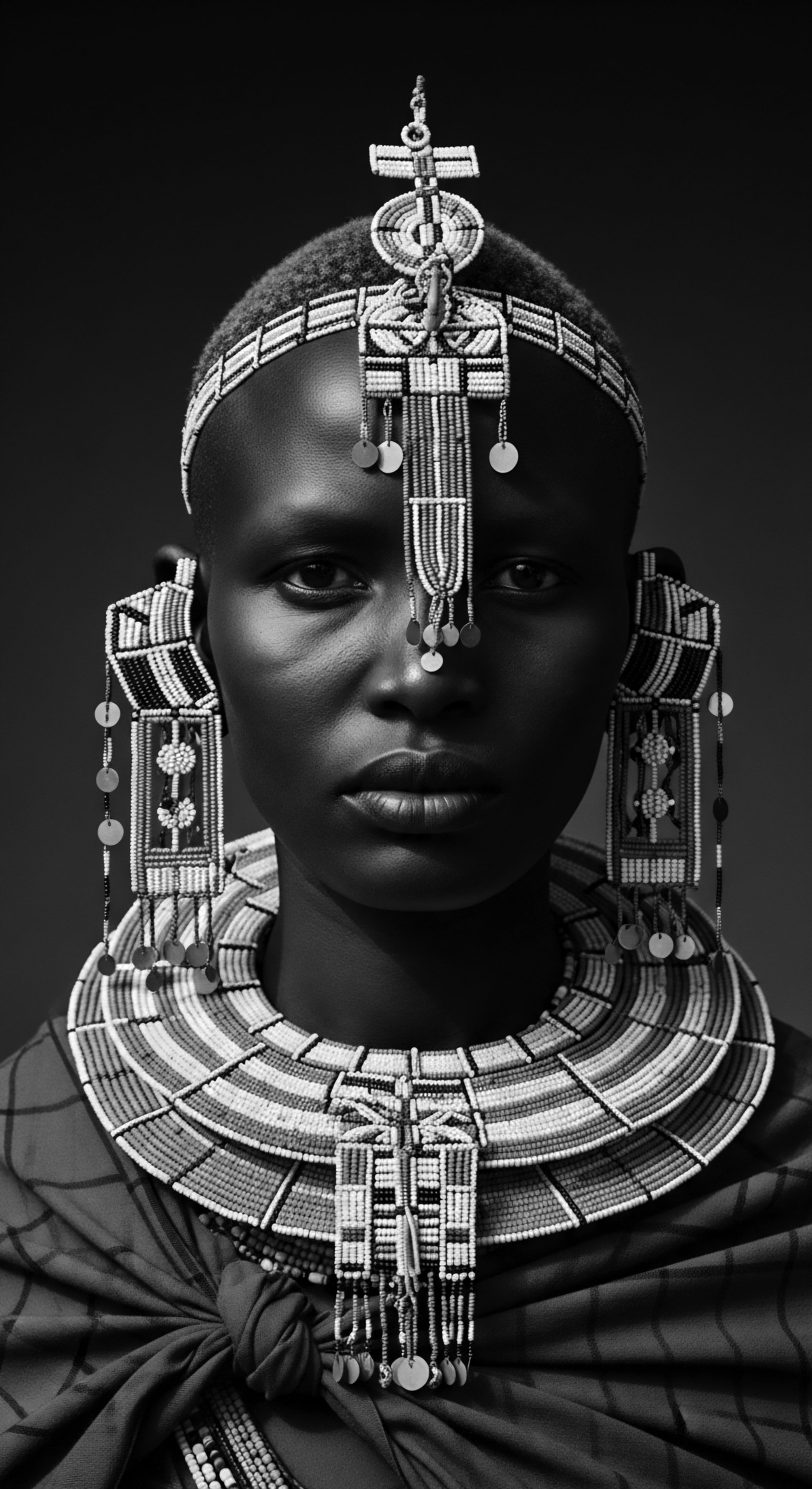
References
- Fletcher, Joann and Salamone, Filippo. “An Ancient Egyptian Wig ❉ Construction and Reconstruction.” Internet Archaeology, no. 42, 2016.
- McCreesh, Natalie. “Ancient Egyptians used ‘hair gel’.” Nature Middle East, August 23, 2011.
- Robins, Gay. “Hair, Gender, and Social Status in Ancient Egypt.” JSTOR Daily, September 11, 2020.
- Valdesogo, Maria Rosa. “The magic and power of hair in ancient Egypt.” The Past, February 20, 2025.
- Ranieri Roy, Laura. “Hair of the Pharaohs.” Ancient Egypt Alive, July 21, 2023.
- Zaid, Randa. “Five Beauty Secrets of the Ancient Egyptians.” Preneur World Magazine, January 16, 2022.
- Aly, Ramy. “The Cultural Significance of Hair in Egypt.” AUCToday, May 28, 2024.
- Fletcher, Joann. Ancient Egyptian Hair ❉ A History of Adornment. Oxbow Books, 2015.
- Lucas, Alfred and Harris, J. R. Ancient Egyptian Materials and Industries. Dover Publications, 1999.
